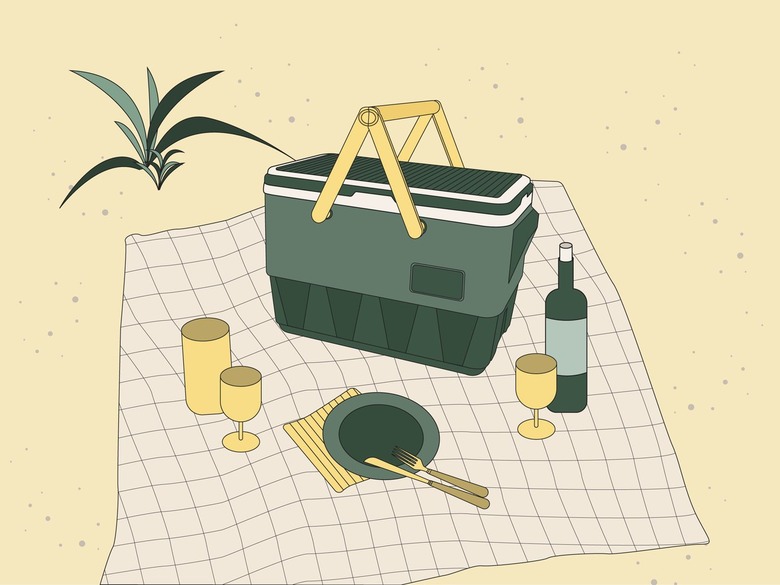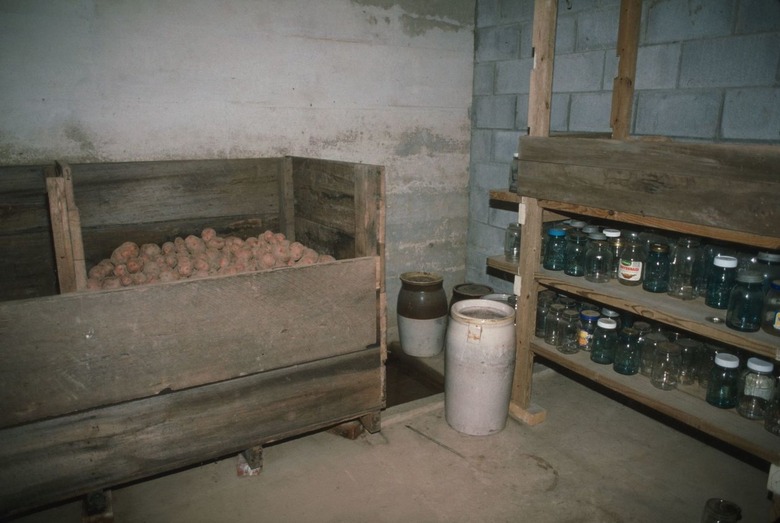The History Of The Cooler, From Rabbit Fur To Boat Plastic
Summertime and picnicking go hand in hand, but the only way we're able to enjoy both at the same time is thanks to one invention: the portable cooler. Though it seems as though this item has always been around, that's surprisingly not the case.
Of course, the history of using cold temperatures for food preservation starts in ancient times. "Any geographic area that had freezing temperatures for even part of a year made use of the temperature to preserve foods," explains the National Center for Home Food Preservation. Caves, cool streams, and cellars acted as vessels for this type of storage.
Who invented the refrigerator?
Who invented the refrigerator?
Eventually, caves became what we now know as the refrigerator. In 1802, engineer Thomas Moore Jr. patented the first refrigerator. His design featured a wooden box with an interior tin chamber, according to the Maryland State Archives. Between the tin and wood, Moore inserted ice, which he insulated with rabbit fur. This type of handiwork was so revolutionary for its time that even Thomas Jefferson was a fan.
The next big thing to happen to the world of food cooling came from Dow Chemical (a company with a not-so-great history). In 1944, the brand patented styrofoam, which was created by Dow research engineer Otis Ray McIntire while he was trying to produce a wartime rubber. Because of this, in 1957, a foam ice chest was able to flourish.
Who invented the portable cooler?
Who invented the portable cooler?
But before the foam ice chest had a chance to shine, Illinois resident Richard C. Laramy received a 1953 patent for the "portable ice chest." Bestcooler.reviews states that Laramy's cooler included styrofoam insulation and was allegedly made of metal. It was called "Kampkold," a Danish word that means "fighting cold." The tagline? "Your home refrigerator away from home."
In 1957, in addition to the foam ice chest, the plastic exterior cooler we know and love today was birthed by the Coleman company. Before this unveiling, the brand was solely known for selling lanterns. Other businesses — especially drink companies like Pepsi and Coca-Cola — followed suit by fabricating their own branded coolers as marketing tactics.
When did Igloo start creating coolers?
When did Igloo start creating coolers?
As for Igloo, one of the most well-known cooler companies today, it actually started out as a metalworking shop in 1947. Specifically, the retailer produced steel buckets that allowed workers to transport clean water to job sites. According to the Houston Business Journal, Igloo didn't create the world's first all-plastic cooler until 1962. Soft plastic coolers were to follow.
One of the latest upgrades the cooler has gotten is thanks to brothers Roy and Ryan Seiders. In 2006, they set out to build a cooler that wouldn't break when they stood on it (which is something they did while fishing). This led them to rotomolding, according to Bestcooler.reviews, which is a boat manufacturing technique that helps plastic retain a uniform thickness. This paved the way for the Yeti brand.
In addition to creating a more durable cooler, the Seiders also decided to do away with styrofoam. Instead, they opted to use polyurethane as insulation, which is more eco-friendly and also allows the inner ice to last longer. So really, this type of cooler benefited everyone, the earth and humans alike.
From wood and rabbit fur to metal, styrofoam, and plastic, the cooler has gone on quite the material journey to become what it is nowadays. Yet, it's surreal to think that the first one of its kind wasn't actually patented until 1953 — less than 70 years ago.



